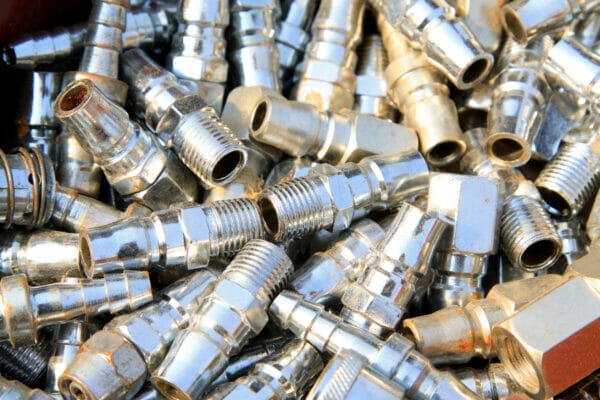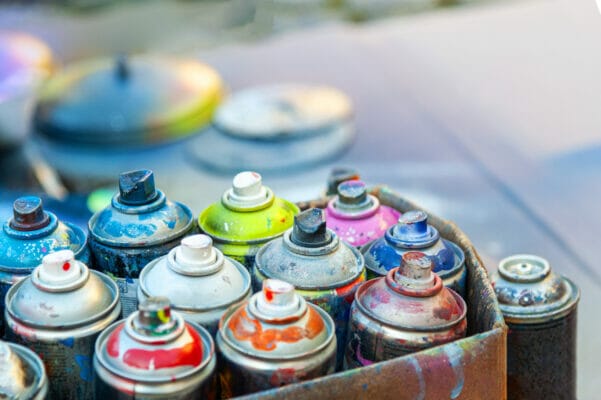Disclaimer: This post may contain affiliate links, meaning we get a small commission if you make a purchase through our links, at no cost to you. For more information, please visit our Disclaimer Page.
Stainless steel fittings are ideal for natural gas due to their corrosion resistance, smooth surfaces, high strength, cleanliness, and ease of maintenance. However, most gas distributors insist on stainless steel piping customization to meet their specific requirements before using it.

Table of Contents
What Kind of Fittings Do You Use for Natural Gas?
Gas fittings are exclusively designed and constructed to fit the application of different gas companies for which they are intended. For instance, liquid petroleum gases have their fittings reverse threaded to ensure gas lines do not connect to airlines, waterlines, or vent lines.
Fittings such as these are useful for connecting straight pipe sections of a variety of sizes and materials. These include elbows, tees, unions, caps, plugs, compression fittings, and valves.
Natural gas is the cleanest of the fossil fuels, according to Union of Concerned Scientists, the gas releases 15 to 20 percent less Co2 and other trapping gases during transportation than other types of gas.
However, the extraction, drilling, and transportation of the gas unless well maintained can lead to increased emissions of methane gas to the surroundings. The effect of this is greater than that of Co2 and accounts for a significant portion of global warming.
Because of their unique features that match the requirements for natural gas, stainless steel fittings are the best choice for applications free from leaks and any other hazards that may arise.
Can You Use Stainless Steel Fittings for Natural Gas?
There is no problem using stainless steel fittings with natural gas. Their efficiency, however, largely depends on natural gas characteristics and the features of stainless steel, as well as the pressure and other requirements for the gas.
Surfaces of stainless steel pipes often used in gas piping systems have dark colors. This looks like coats of paint or polymers, but in reality, their black color is a product of chemical reactions during their manufacture. This, results in the formation of iron oxide on the steel pipes, making them appear dark-coated.
The stainless steel pipe, however, should be distinguished from galvanized steel pipe, which is steel with a zinc coating. These galvanized metals are not reliable with natural gas because they tend to flake off and clog the gas regulators and burners. You should be aware that galvanized steel is best for water supplies as opposed to gas supplies.
What Are the Characteristics of Stainless Steel Pipes?
These pipes made from these materials are highly resistant to rust and corrosion, making them ideal for use in tough climates, hard terrains, and tougher weather conditions.
As a result of the electro-chemistry in the walls of the pipes, cathodic protection takes place in the 1/4 to 1/2 inch thick pipes, achieving resistance.
The pipes made of stainless steel are easy to clean and maintain since they need a thorough cleaning occasionally after prolonged use.
In transit, the smooth surfaces of the furnishings reduce much of the interaction of the gas molecules with the surfaces; this also reduces the effect of the molecules on the inner walls of the pipes.
Although some of these pipes have been in existence for years, their strength has contributed to preventing leakages over time.
What Kind of Pipe Is Used for Natural Gas Outside
The exposed natural gas pipes have no proven defects, but you should make sure that you maintain your country’s gas regulations before investigating this method for piping your buildings.
International residential codes and Florida’s building codes, for instance, prohibit using gas pipes in exterior locations due to their susceptible corrosion.
Another option is to install these pipes but with relative protection measures applied to prevent corrosion; usually because of changing weather conditions.
However, some countries openly disapprove of the use of galvanized steel or copper pipes for using natural gas outside the house because the sulfur in the gas reacts with the zinc in galvanized steel, causing it to flake off.
Additionally, hydrogen sulfide in natural gas can react with copper tubing in gas lines and cause black flaking.
Stainless Steel Pipes
Pipes made of these materials offer exceptional strength, corrosion resistance, and the ability to handle high pressures, which makes them an excellent choice for natural gas piping in exterior walls.
As well as being resistant to UV rays, these pipes are perfect for environments with high temperatures.
There is a possibility that the exposure might result in a thin coating of chromium oxides forming on the pipes affecting the pipe’s corrosion resistance. Before their use outside, stainless steel pipes may need some light finishing operations to prevent the formation of chromium oxides.
Advantages
- They are relatively cheap
- The pipe’s shiny surfaces appear attractive, modern, and are relatively bright.
- Their properties make it easy to fabricate in terms of welding, forming, and cutting.
- Their strength and toughness are excellent even in extreme temperatures
- In addition to these pipes being resistant to UV radiation, they are also heat- and fire-resistant. This characteristic is due to the high chromium, molybdenum, and nickel alloys, which ensure that the pipes remain unaffected by acids, alkalis, and other chemicals.
- They are suitable for finishing operations preventing microbial growth that is important for the food and beverage industry.
Disadvantages
- They are quite heavy in weight
- Their costs may vary depending on their immediate application.
- Stainless steel pipes may fail to match perfectly with thermal conductivity.
- When chlorine levels are high, such as in swimming pools, the materials are susceptible to corrosion.
Although stainless steel pipes have disadvantages, they are still a great choice for a variety of uses, including exterior natural gas applications.

Is it OK to Paint Natural Gas Pipes?
In some cases, exterior installed stainless steel pipes may need painting either as government directives or for beautification.
While you might want your pipes to match your house walls, this might not be necessary. Although it may make the steel pipes more corrosion resistant, it might not be necessary.
In any case, if you opt to paint the steel pipes in your home, spray painting would be a good idea since it is the most effective method for preventing surface corrosion.
Besides titanium plating, sandblasting, copper plating and wiredrawing, you can surface paint in a variety of ways.
In the event that none of these paintings appeals to you, you can select any colors of your choosing.
Nevertheless, if you are painting as part of a uniformity initiative by the government or your local council, it is best to follow the paint color specified by the government.
As long as the painting is a government directive, as much as their reasons may not make sense technically, you will not have any other choice other than to paint it.
Painting Process for Exterior Stainless Steel
In case you are painting as an extra precautionary measure to protect the pipe, you must follow the following procedure.
- Make sure the stainless steel pipe is clean by removing any residual paint on the surface using a knife. Then finish the surface with a sandblast or by scrubbing it with sandpaper to roughen the surface.
- Spray primer paint that prevents metal oxidation as well as firmly connecting the metal and the initial topcoat.
- Spray the paint of your choice along with its curing agent. You are also not limited to spray painting; you can paint by brushing the surface. However, using a brush will need 3-5 wipes for the paint to merge with the surface.
Conclusion
It is okay to use stainless fittings in natural gas piping because they are ultra-strong, durable, and corrosion-resistant.
As a result, it applies to all-natural gas applications, including exterior installations. This allows you to paint the pipes to reduce the corrosion effect on them or just for decoration.
